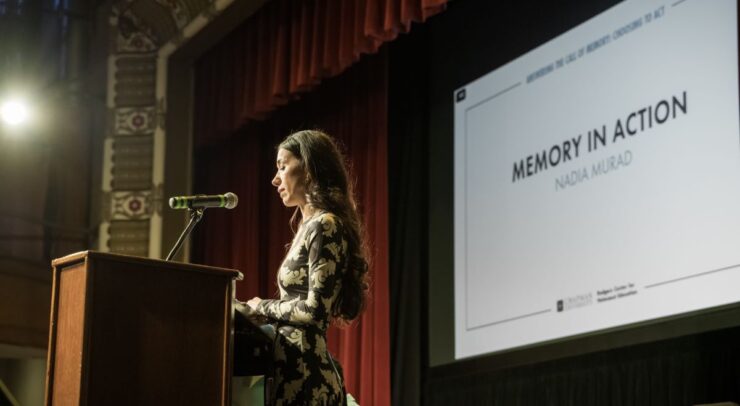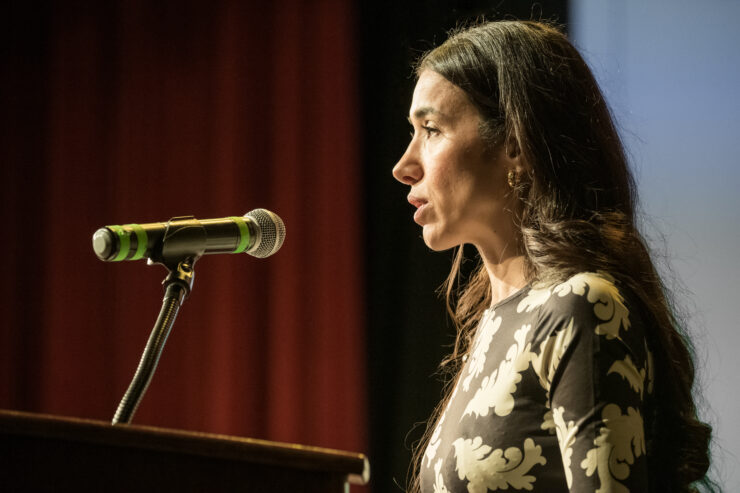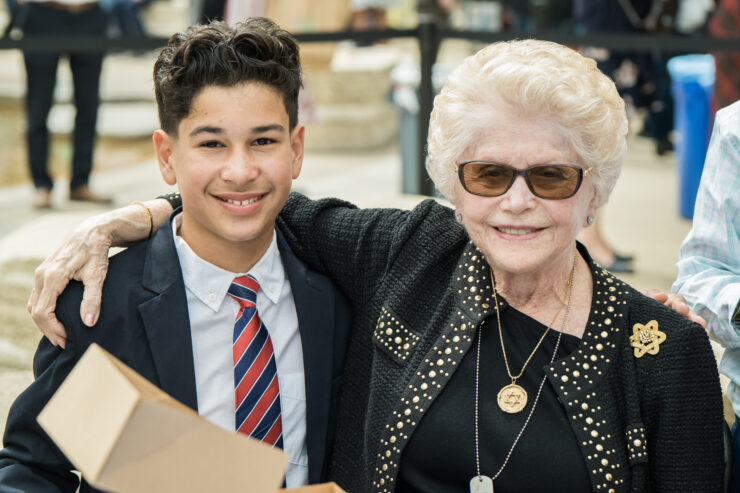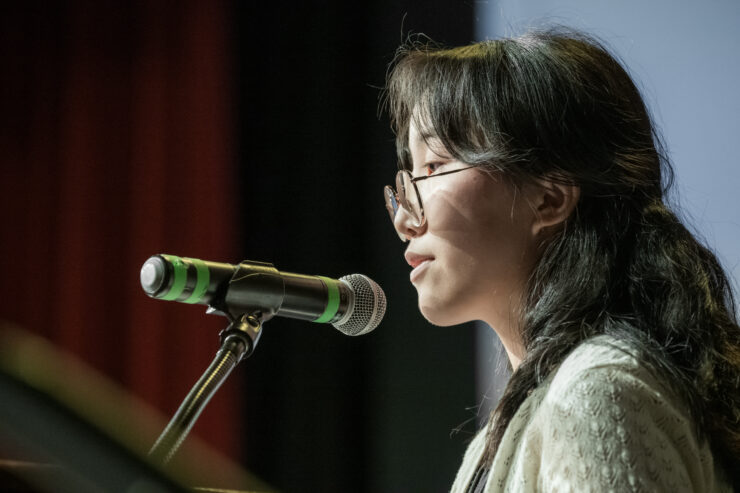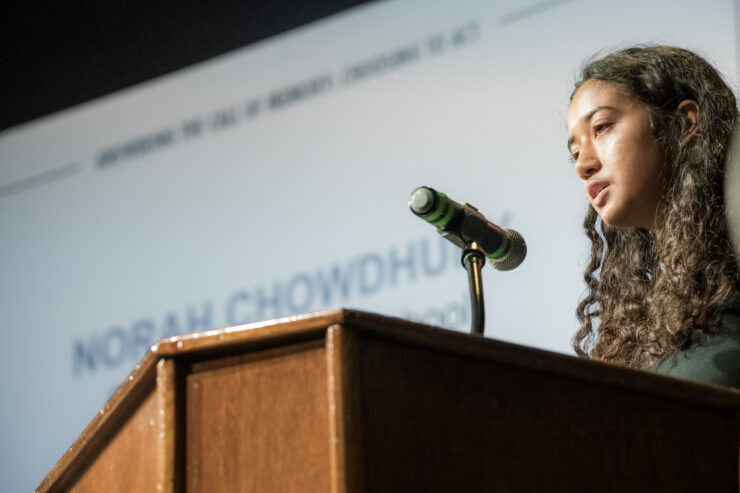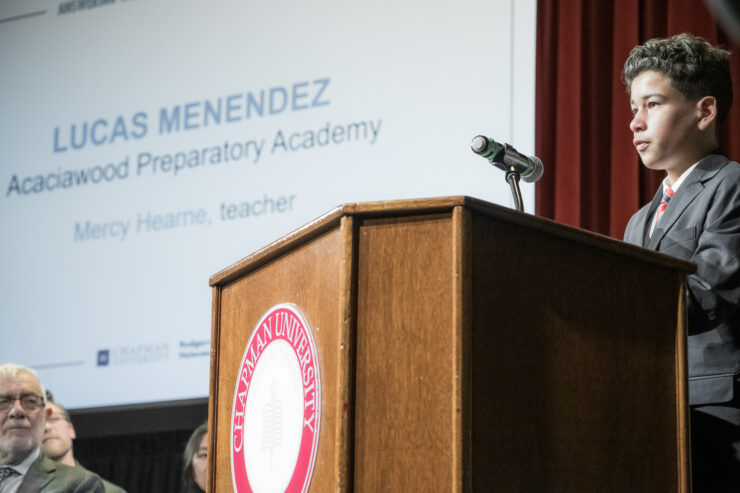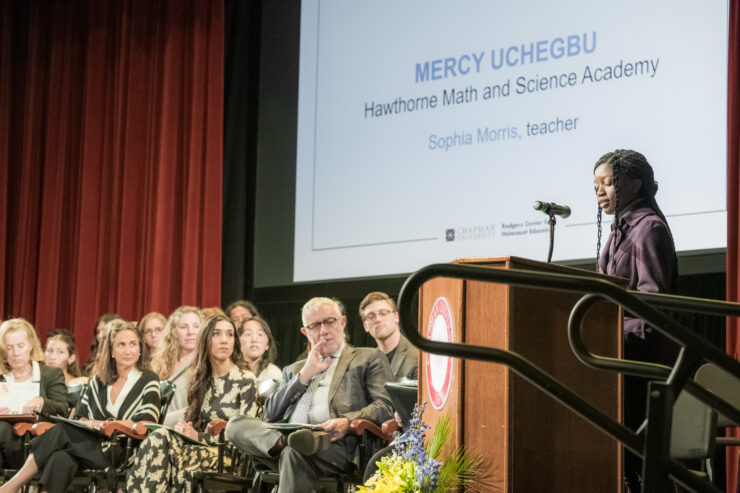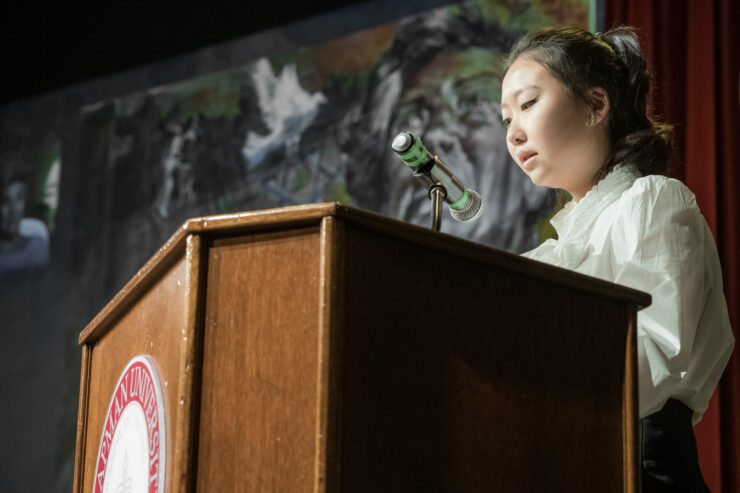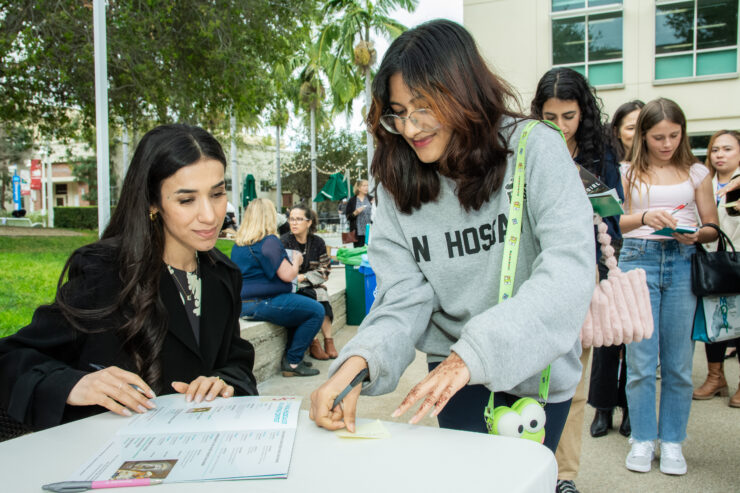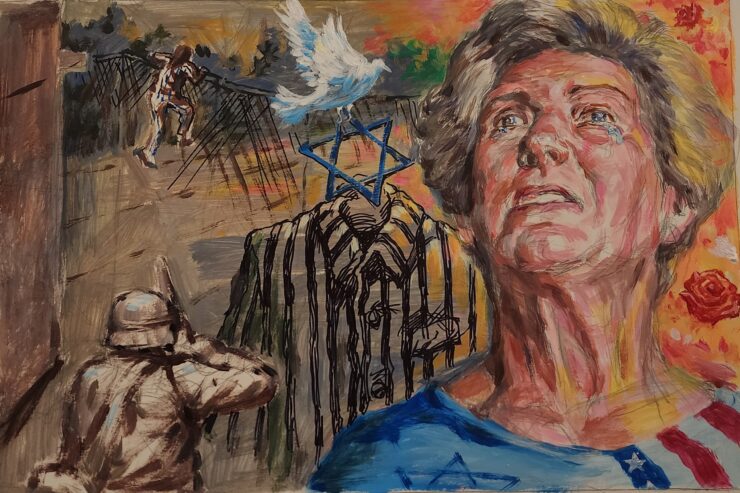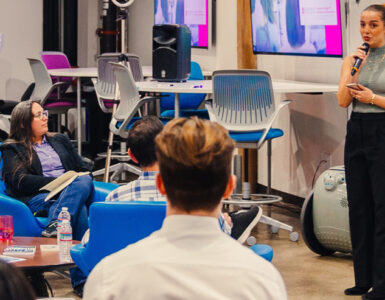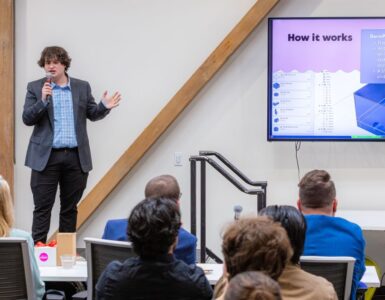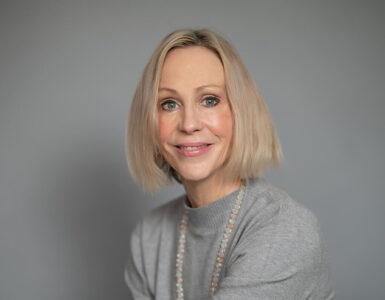Fernando Vargas waited in line to speak with people who lived through one of history’s great atrocities.
Vargas, an eighth-grader at Spring View Middle School in Huntington Beach, was one of 7,000 middle school and high school students who participated in Chapman University’s 25th annual Holocaust Art & Writing Contest. As part of the event, each participant submits an essay, poem, visual artwork or film inspired by a survivor’s testimony. Vargas wrote an essay about survivor Harry Wellner.
“His story was very touching,” said Vargas, who wrote about how Wellner persevered each day while carrying bricks in a concentration camp.
After waiting to talk with survivors at a reception after the awards ceremony on March 15, Vargas said it’s difficult to imagine the cruelty that survivors had to endure.
“It’s hard to comprehend that they went through all that and are here today,” he said.
One of those people was 91-year-old Yetta Kane, who has traveled from Long Beach to attend ceremonies throughout the contest’s 25 years. Kane helped Polish resistance fighters as a girl and lived with her family in the woods to evade the Nazis.
“This university has been doing a fantastic job training and teaching young people to learn about history,” Kane said.
She said the experience will equip students with the ability to educate others on the Holocaust. Through meeting with survivors, they’ll be able to pass on important lessons and “will teach people that yes, the Holocaust happened … we all have to be loving and caring,” she said.
Kane sat with about 30 other survivors in Chapman’s Memorial Hall auditorium to see contest winners’ art, film and writing pieces and hear Presidential Fellow and Nobel Peace Prize laureate Nadia Murad speak. The auditorium was filled with students and educators from some of the 161 schools that participated in the contest. Participants were from more than 30 states and 10 countries.
Murad compared her story of being hurt by war and religious persecution to Anne Frank. Although there were differences between them, “I felt an extraordinary kinship,” said Murad, who was captured by the Islamic State and lost several family members to ISIS’ attacks on the Yazidi group in Iraq.
“(Frank) described her fear and loneliness but also her delight in a new pair of shoes and her first crush, surrounded by posters of movie stars on her small bedroom wall,” Murad said. “She contributed more to our collective memory about the impact of war than any general ever could. Through her writing, we understand how persecution affects ordinary people.”
Murad said Frank’s diary is a reminder that each of the 6 million people who died in the Holocaust was a person with hopes, dreams and desires. The notion underlies a major goal of the contest — helping students see survivors not just as statistics or as their stories of trauma, but as people who have built fully-rounded lives post-tragedy.
“When I wrote my book, I wanted to honor the thousands of Yazidis who died during the genocide,” she said, describing “The Last Girl: My Story of Captivity, and My Fight Against the Islamic State.” “I wanted to tell the world that each person killed was a mother, a father, a brother or a husband who was loved, whose lives weren’t so different from those living elsewhere in the world and were equally precious.”
Marilyn Harran, director of Chapman’s Rodgers Center for Holocaust Education, said Murad and Holocaust survivors “demonstrate that memory can empower rather than imprison.”
“It can inspire us to work toward creating a society free of bigotry, racism and antisemitism,” she said.
An exhibit looking back on the contest’s 25 years is being planned in April at the Hilbert Museum of California Art.
Contest winners
MIDDLE SCHOOL PROSE
Isabelle Tran, Grade 8
Thurston Middle School, Long Beach
Teacher: Laura Silver
Survivor testimony: Kurt Messerschmidt
“Morning Silence”
“… Kneeling at the storefront, on his quivering, bent knees, the gentle old owner stooped as he gingerly gathered glass with his quaking, gnarled hands … Yet, no one moved. No one blinked. No one wavered at this sickening sight. Until Kurt shoved his way forward. Casting aside his bike, he too knelt. He didn’t kneel in submission to the leering Sturmabteilung’s members; he knelt in defiance. Delicately, he plucked shards from the ground, refusing to wince even as fragments pierced his skin …”
MIDDLE SCHOOL POETRY
Hanna Fung, Grade 8
Pioneer Middle School, Tustin
Teacher: Heather Tolliver
Survivor testimony: Engelina Billauer
“The Chance”
“… She never got to be and was never a teenager.
She endured hell on earth to tell her story, a story that bids me, bids us, to speak up in the face of injustice — before it’s too late.
Stand up for others when they’re attacked with hate,
Take care of one another, give each other aid,
Make sure no one is lonely, and that no one is afraid …”
MIDDLE SCHOOL ART
Faith Pelz, Grade 8
Mayberry Cultural and Fine Arts Magnet, Wichita, Kansas
Teachers: Allison Carson
Survivor Testimony: Selene Bruk
“The Hope in Hopelessness”
“During research for this contest, I read that daffodils symbolize hope. In my piece I wanted to show the darkness of this time through a gray scale, and the value of hope in color.”
MIDDLE SCHOOL FILM
Lucas Menendez, Grade 6
Acaciawood Preparatory Academy, Anaheim
Teacher: Mercy Hearne
Survivor Testimony: Barry Bruk
“Although Barry Bruk suffered unbearable atrocities, he chose to act. His actions resulted in saving a family of five from being shot due to a curfew imposed by the Nazis … His actions tied to his testimony in the phrase ‘I didn’t think twice’ taught me that in life there are situations where you must act because it is the right thing to do.”
HIGH SCHOOL PROSE
Norah Chowdhury, Grade 10
Sunny Hills High School, Fullerton
Teacher: Christina Zubko
Survivor Testimony: Selene Bruk
“Storyteller”
“… I will answer the call of memory by constantly telling the stories of those ravaged by genocide, from Holocaust survivors like Selene to victims of more modern mass murders like my grandfathers, lest we see them slip into the dark once again. I choose to shine a light.”
HIGH SCHOOL POETRY
Mercy Uchegbu, Grade 10
Hawthorne Math and Science Academy, Hawthorne
Teacher: Sophia Morris
Survivor Testimony: Engelina Billauer
“Unbreakable Bonds”
“… The Germans expected them to break into pieces, but the five of them stayed whole.
… Every little piece of bread we found or we got, we cut in 5 pieces.
It’s the ability to love and be loved, to put someone else before yourself. A symbol of humanity in the darkest of times,
Where acts of compassion
Were infused in the tiniest of morsels.”
HIGH SCHOOL ART
Jiyun Woo, Grade 11
Crean Lutheran High School, Irvine
Teacher: Sherrie Lah
Survivor Testimony: Hilda Eisen
“Hope is Never Lost”
“Hilda Eisen had escaped bravely not once — but twice — from death. The dove in the artwork represents the Jewish symbol of peace. In the background, Hilda is climbing the fence with a broken ankle while the German officer shoots at her. As she ‘flies’ toward freedom and peace, the dove flies with her, representing Hilda’s hope.”
HIGH SCHOOL FILM
Ariella Pelton, Grade 9
Woodbridge High School, Irvine
Teacher: Karen Briner
Survivor Testimony: Cesia Kingston
“What stuck with me the most was the Nazis’ determination to have the last word on everyone’s lives … watching her recount stories of what she had been through made me think about the Nazis’ control of the lives of the millions they murdered: how can I have the last word?” (She wrote down the names of 518 people who died — “518 last words.”)
